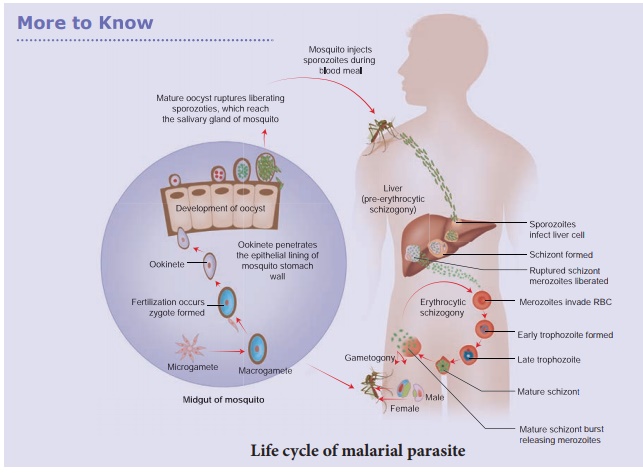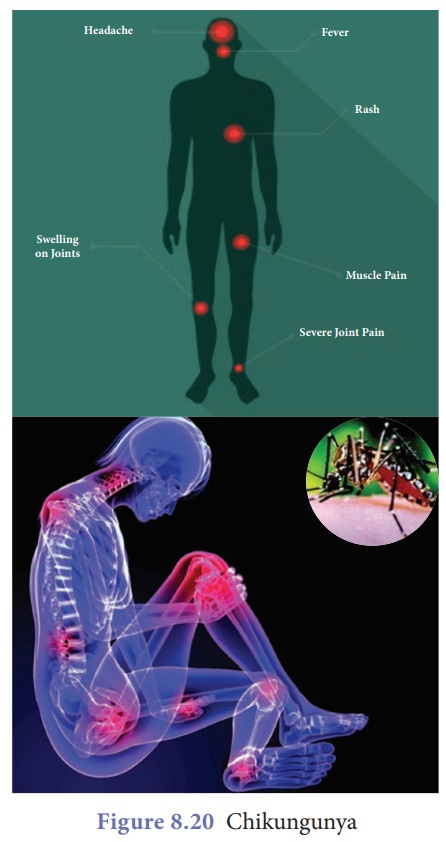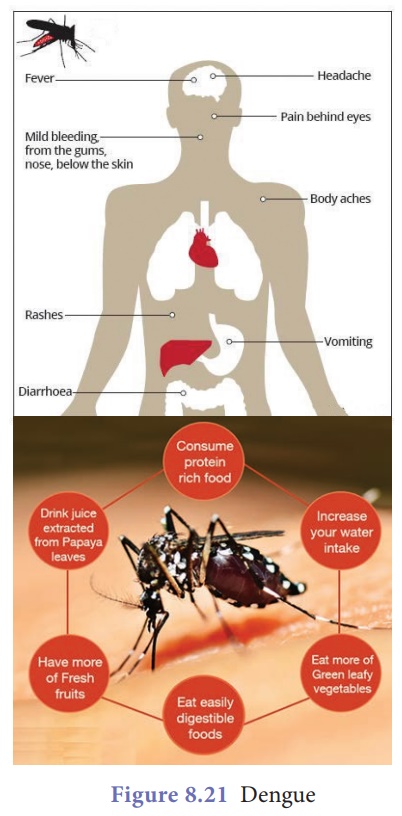Chapter: 9th Science : World of Microbes
Vector Borne Diseases
Vector Borne Diseases
Vector is an agent that
acts as an intermediate carrier of the pathogen. Many insects and animals acts
as vectors. Diseases transmitted by vectors are called vector borne diseases.
These vectors can transfer infecting agents from an infected person to another
healthy person. Some of the insect vector borne diseases are Malaria, Filaria,
Chikungunya, Dengue, and the diseases which are transmitted through animals are
Bird flu and Swine flu.
1. Malaria
Malaria continues to be
one of the major health problems of developing countries. Malaria is caused by protozoan
parasite Plasmodium. Four different species of Plasmodium namely,
P.vivax, P.malariae, P.falciparum and P.ovale cause
malaria. Malaria caused by Plasmodium falciparum is malignant and
fatal. Approximately 300 million people around the world get infected with
Malaria every year. It may be fatal to human beings, but cure is available.
It spreads through the
bite of an insect vector the female Anopheles mosquito which feeds on
human blood and usually lasts less than 10 days. A person affected by malaria
will show symptoms of headache, nausea, muscular pain, chillness and shivering,
followed by rapid rise in temperature. The fever subsides with profuse
sweating. Use of Quinine drugs kills the stages of malaria parasite.

2. Chikungunya
Chikungunya, which is
caused by single stranded RNA virus, is transmitted in humans by the bite of
infected Aedes aegypti mosquito during the day time. It causes severe
and persistent joint pain, body rashes, headache and fever. Joint pains can
last for a very long time.
Incubation period of the
virus is usually 2-12 days. Chillness, high fever, vomiting, nausea, headache,
persistent joint pain and difficulty in walking are the common symptoms
associated with this disease. The joints get inflamed and the person finds it
difficult to walk. Paracetamol is given to relieve pain and reduce fever.

3. Dengue
Dengue is known as break
bone fever. The name break bone fever was given because of the
contortions caused due to the intense joint and muscle pain.
Dengue haemorrhagic
fever is more severe form and can be life threatening or fatal.

Dengue fever and Dengue
haemorrhagic fever are caused by virus. It is transmitted by Aedes aegypti mosquito
that has previously bitten an infected person. Incubation period of the
virus is usually 5-6 days. Onset of high fever, severe headache, muscle and
joint pain (break bone fever), rash and other haemorrhagic manifestation, fall
in blood platelet count are the symptoms associated with this disease. Vomiting
and abdominal pain, difficulty in breathing, minute spots on the skin
signifying bleeding within the skin are also associated with dengue fever.
Paracetamol is given to reduce fever and body ache. Complete rest and increased
intake of fluid is essential.
4. Filaria
Filariasis is a major
health problem in India. This disease is caused by nematode worm Wuchereria
bancrofti. The adult worms are usually found in the lymphatic system
of man. It is transmitted by the bite of infected Culex mosquito.
Incubation period of
filarial worm is 8-16 months and the symptoms include acute infection, fever
and inflammation in lymph glands. In chronic infection the main feature is elephantiasis
which affects the legs, scrotum and the arms.
The parasite is
deposited at the site of mosquito bite. It passes through the punctured skin
and finally reaches the lymphatic system. They appear in large number in the
blood stream during night displaying nocturnal periodicity.
5. Control and prevention of vector borne diseases transmitted through mosquitoes
·
Prevention of mosquito bites by using mosquito nets, mosquito
screens, mosquito repellents and ointments.
·
Elimination of breeding places by providing adequate sanitation,
underground wastewater disposable system and drainage of stagnant water.
·
Collection of water in any uncovered container such as water tank,
pots, flower pots, discarded tyres should be avoided.
·
Control of mosquito larvae by spraying oil on stagnated water
bodies.
·
Adult mosquitoes can be killed by spraying insecticides.
·
Application of citronella oil or eucalyptus oil on the exposed
skin.
Related Topics